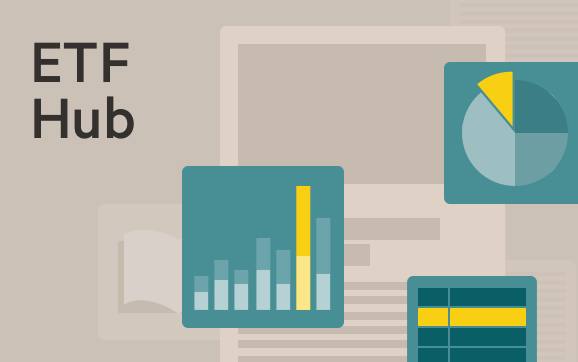[ad_1]
Obtain free Alternate traded funds updates
We’ll ship you a myFT Day by day Digest e mail rounding up the most recent Alternate traded funds information each morning.
Newest information on ETFs
Go to our ETF Hub to seek out out extra and to discover our in-depth knowledge and comparability instruments
The urge for food for fairness publicity might have faltered in Europe within the first half, however the image is markedly totally different for some bonds.
Whereas inflation-linked bond funds have admittedly failed to draw a lot curiosity, fixed-income trade traded funds in mixture took in €15.9bn within the second quarter, up barely from €15.1bn within the first three months — a document degree of demand.
“Flows into bond ETFs reached an all-time excessive within the first half of the yr as traders sought to profit from rising bond yields and redress imbalances in portfolios, which have been underweighted in fastened revenue for a few years,” mentioned Morningstar.
The yields on developed market authorities bonds that many traders contemplate to be risk-free at the moment are fairly tempting, and this appears to have had an affect on the sorts of bond funds which can be in excessive demand.

This text was beforehand revealed by Traders Chronicle, a title owned by the FT Group.
Traders have favoured ETFs shopping for authorities and investment-grade bonds — the latter being probably the most defensive type of company debt. And the yields of among the hottest bond ETFs throughout Q2 look attractive.
The iShares $ Treasury Bond 7-10 Yr Ucits ETF (IBTM) had a 12-month trailing yield of two.6 per cent on 12 July, however this can be a backward-looking determine that’s unlikely to mirror the complete extent of additional yield rises in current months. That mentioned, the preferred fund, the iShares Core € Company Bond Ucits ETF (IEBC), had a extra modest trailing yield of 1.6 per cent.
What’s fascinating is how ETF traders seem like positioned in relation to period, or a bond’s sensitivity to modifications in rates of interest.
“The flows image signifies that traders are more and more favouring the center space (5 to 10 years) due to their expectations of the evolution of the rate of interest cycle,” mentioned Jose Garcia-Zarate, affiliate director for passive methods analysis at Morningstar. “A number of of the Morningstar bond classes experiencing outflows within the second quarter have been [focused on] short-term-maturities and inflation-linked bonds,” he mentioned, including that though central banks have been nonetheless in tightening mode, traders are already betting on a peak in charges.
“They’re shifting the main focus from the brief to the mid-to-long space of the yield curve to pre-empt a change of cycle in direction of a interval of stability in rates of interest and in the end decrease ones within the longer run,” Garcia-Zarate mentioned.
Different elements of the funding universe have regarded much less sturdy, with authorities bonds specifically persevering with to endure within the face of sticky inflation and rising rates of interest. Within the UK, the 10-year authorities bond yield, which strikes inversely to its worth, has risen from about 3.4 per cent at the beginning of the yr to 4.4 per cent on the mid-year stage.
Apart from bond ETFs, the primary half of the yr has been variety to not less than a few of 2022’s contrarian traders. The S&P 500 index was again on type with a sterling complete return approaching 10 per cent, European equities surged and even Japanese shares loved wealthy good points after a protracted stint within the doldrums. Within the US, the tech giants that faltered so notably final yr have made big returns to this point in 2023.
Passive funds are a easy method to mimic these market returns, however these utilizing them are seemingly taking a cautious method. The European trade traded fund (ETF) and trade traded commodity market attracted web inflows of €28.1bn throughout the second quarter (Q2) of 2023, down from €38.9bn in the primary quarter, based on Morningstar.
Garcia-Zarate famous that the general quarterly slowdown in flows “was largely pushed by decrease urge for food for fairness market publicity”. Flows into fairness ETFs amounted to €12.7bn in Q2 2023 — down 42 per cent on the earlier quarter’s determine.
Newest information on ETFs

Go to the ETF Hub to seek out out extra and to discover our in-depth knowledge and comparability instruments serving to you to know every thing from efficiency to ESG rankings
By way of the preferred sorts of fairness ETFs in the second quarter, Morningstar famous that traders confirmed a “decisive choice” for funds in its international large-cap mix fairness class, which loved inflows of €10.5bn. US large-cap mix fairness funds took in €2.9bn, whereas the third hottest class — Japan large-cap fairness — took in €2.2bn, a testomony to that market’s current good run.
However it’s notable that ETF traders have continued the current pattern of abandoning funds that monitor shares deemed to commerce under their intrinsic worth. “The disinvestment from value-focused equities that began within the first quarter continued within the second,” mentioned analysts at Morningstar. “Against this, the teams of growth- and quality-focused fairness methods are seeing inflows. That is hardly shocking contemplating that worth has underperformed progress by over 20 per cent within the first half of 2023.”
Commodity funds additionally offered off in Q2, with €2.4bn outflows greater than offsetting a €1.3bn influx in the earlier quarter. This can be due to some weak current efficiency in addition to a worsening outlook for these belongings.
“All Morningstar commodity classes confirmed outflows within the second quarter, however the primary disinvestment befell within the group of valuable metals merchandise, with €1.6bn of outflows,” Morningstar analysts mentioned.
*Traders Chronicle presents an skilled and impartial view of the UK funding market. To seek out out extra, go to investorschronicle.co.uk
[ad_2]
Source link

